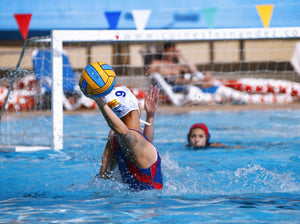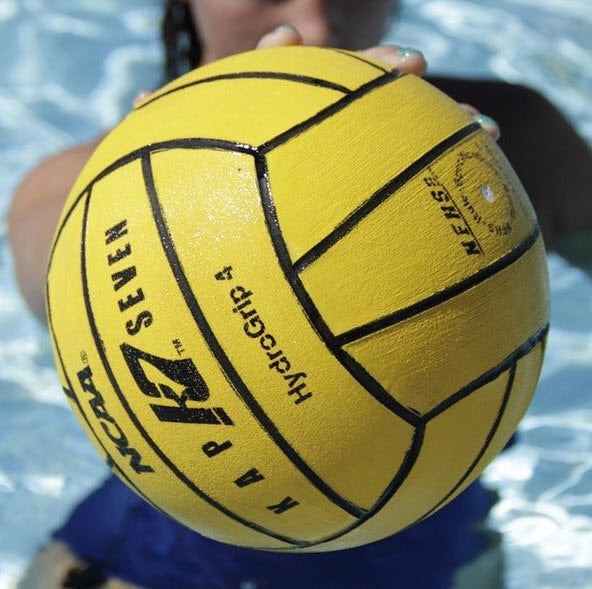How to Shoot a Lob Shot in Water Polo
The lob is a slower, arced shot usually taken when a power shot is no longer an option (either because of your distance from the goal or the defense's position). Lobs aren't the most common shot in water polo and they certainly shouldn't be the only kind of shot you ever take, but they are something every serious water polo player should become skilled at. This guide walks you through the mechanics of a lob shot and explains the most appropriate times to take one.
How to Shoot a Lob Shot
The lob shot varies from a typical power shot in that it does not require the same body positioning, and the trajectory of the ball is curved, rather than straight. It takes time to master a reliable lob shot, so be prepared to spend time getting the release and placement just right. Lobs are difficult for goalkeepers to block, so chances are they'll appreciate the extra practice.
Step 1. Get into Position
Start by cradling the ball with your strong hand. Hold it up and behind your head as though taking a power shot. Your opposite hip and shoulder should be pointing in the direction you want the ball to travel. Next, tread up high. For a successful lob, your body needs to be vertical, and your torso and arm need to be out of the water.
Water polo players — both new and experienced — often make the mistake of shooting a lob off their back since that makes it easy to mimic the height and curve of a lob. However, this nearly always sends the ball too high and over the cage. Instead, make an effort to come as vertically high out of the water as possible.
Step 2. Draw the Goalkeeper Out
A key element of the lob is taking the goalkeeper by surprise, so if you have time, fake a power shot. Do whatever you can to draw the goalkeeper towards you, making it that much harder for them to get back into the goal to block your eventual lob. You can also tread slightly forward or to the side to get the goalkeeper to commit to one corner of the cage.
A hard fake can sometimes get the goalkeeper to pop up in anticipation of an immediate power shot. Wait half a beat for them to start sinking down, then send off your lob. They won’t be able to react quickly enough to get to the other side of the cage before the ball does.
Step 3. Aim & Shoot
 Aim at the far, high corner of the cage and — rotating your body as you throw — release the ball. The movement will be more of a push and flick of the wrist, opposed to the powerful overarm sweep of a power shot. The release point will be higher than it would be for a power shot, since the ball needs to clear the goalkeeper's hands. When you release, put a good backspin on the ball with your middle three fingers. A ball without backspin will not arc enough.
Aim at the far, high corner of the cage and — rotating your body as you throw — release the ball. The movement will be more of a push and flick of the wrist, opposed to the powerful overarm sweep of a power shot. The release point will be higher than it would be for a power shot, since the ball needs to clear the goalkeeper's hands. When you release, put a good backspin on the ball with your middle three fingers. A ball without backspin will not arc enough.
When to Shoot a Lob Shot
Lob shots are meant to send the ball up and over the goalkeeper — and/or defenders — and into the far corner of the goal. Ideally, lob shots are taken from the shooter's strong side: Left for right-handers, right for lefties. Because it is a cross-cage shot, accuracy and timing are very important. One or more of the following conditions may mean it is appropriate to shoot a lob:
- The goalkeeper is on the near side of the goal and effectively cutting off your angle for a near-side shot.
- There are multiple defenders with their hands up between you and the goal.
- You are too far away for a strong power shot.
- You are able to get vertical for the proper body position that a lob shot requires.
- The goalkeeper is clearly expecting a power shot.
Variety is the Spice of Water Polo
Because a lob doesn't require the speed and strength of other shots, less-confident players tend to overuse them in games. It is important to remember that the lob is most effective when it is unexpected. Varying your shooting styles will make it much harder for goalkeepers to predict and block your shots. Use lobs only when the timing and positions of the players surrounding you are right, and you will have a much higher success rate.



